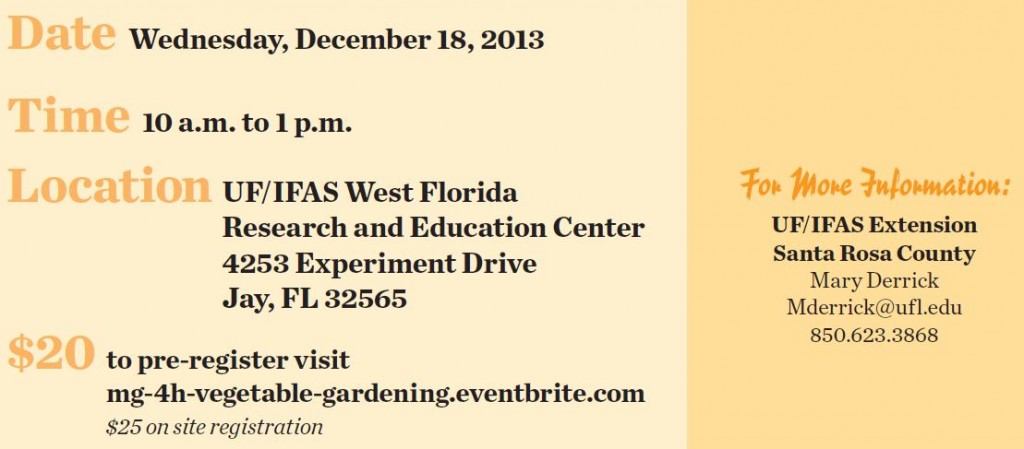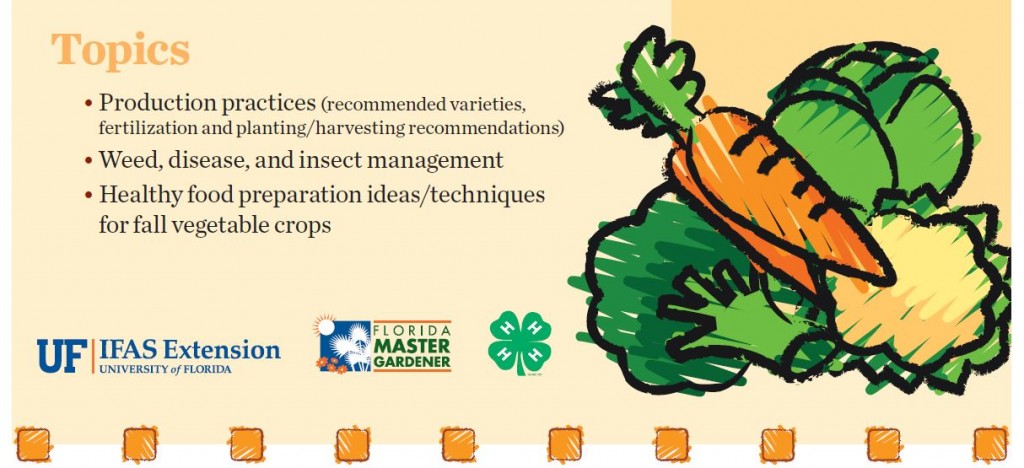by Mary Salinas | Jan 7, 2014
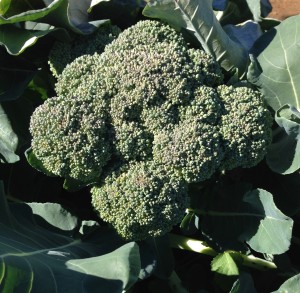
Broccoli, a popular winter vegetable. Photo by Mary Derrick, UF IFAS
In the Florida panhandle, we are fortunate to be able to grow crops throughout the year. The key is to know what to plant at the various times of the year.
Vegetables that can be planted now include beets, broccoli, cabbage, carrots, cauliflower, Chinese cabbage, collards, kale, kohlrabi, lettuce, green onions, English peas, radish and turnips. For those that are started from seed, especially carrots and radish, sow seed every 2 to 3 weeks to stagger the harvest.
During this cool time of the year, take stock of the vegetable garden area and decide if changes need to be made, such as moving or adding on to it. This is a good time of year to do the heavy labor before the warm, sweaty weather sets in. A popular choice is to add raised beds for growing herbs and vegetables. An advantage of a raised bed is that the garden starts with clean, rich soil that is weed and pest free. Grass and weeds do not have to be dug out for the garden; they can simply be covered by heavy groundcloth, newspaper or cardboard and the raised bed is placed on top.
[important]Consider getting a soil test if one has not been done within the past few years. Always get a soil test before adding lime – it will indicate if lime is needed and exactly how much to apply for best results. The cost is only $7 through the University of Florida. Contact the local Extension office for a soil test kit.[/important]
Stepping outside of the vegetable garden for a moment, for those interested in deciduous fruit such as peaches, pears and apples this is a great time to plant trees to give their roots time to develop before the warm, dry spring months. Be sure to select varieties that are proven performers for North Florida.
For further information please see:
Florida Vegetable Gardening Guide
Gardening in Raised Beds
Soil Sampling and Testing for the Home Landscape or Vegetable Garden
Deciduous Fruits for the Home Gardener in North Florida and North Central Florida
by Beth Bolles | Dec 24, 2013
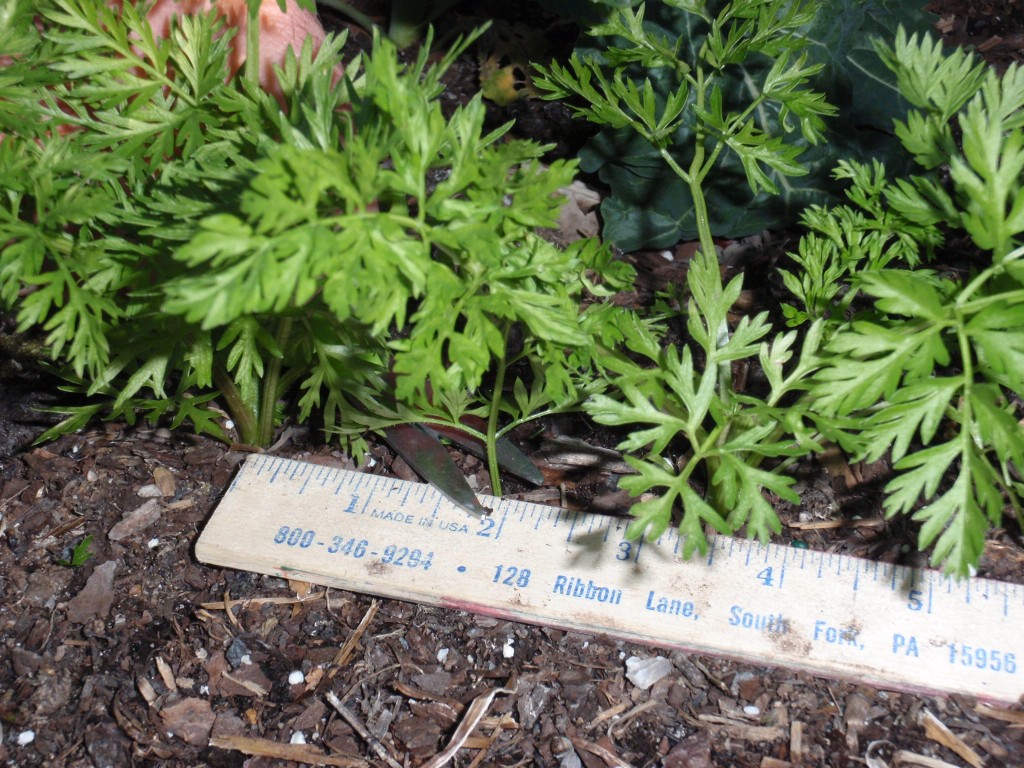
For best root development, thin carrots to 2-3 inches between each plant.
Many common cool season vegetable garden plants are started in raised beds by direct planting of seeds. It is important to follow the guidelines in the ‘Monthly Vegetable Planting Guide’ (Page 6) for plant spacing and seed depth. It is possible to thin out seedlings that are growing too close, but seeds that are planted at the incorrect depth may not germinate.
Vegetable seedlings will need to be thinned out after germination to allow for adequate space for leaf or root development. Crowded vegetables will compete with each other for water, nutrients, and sunlight and never produce quality plants.
Here are some tips for thinning seedlings:
- When plants are about 1 to 2 inches tall or have two sets of ‘true leaves’, it is time to thin out any crowded plants.
- Look up the proper spacing between plants and thin out appropriately.
- Pull out seedlings with fingers or forceps to make space or use small
scissors to cut off seedlings at the ground level.
- It will initially look like there is lots of room between seedlings but realize plants will grow quickly to utilize all available space.
by Taylor Vandiver | Dec 24, 2013

Garden Tools. Photo courtesy: UF/IFAS Gardening Solutions
Due to a lack of snow, Florida’s winter landscape chores are relatively uncomplicated. However, that doesn’t mean they’re unimportant. As the growing season comes to a close and gardeners mow, snip and spade for the final time, it’s time to consider proper cleaning and storage of all that equipment. A little preventative maintenance can avoid frustration and expensive repair in the future. When tools are maintained properly their life is extended substantially and their work efficiency is increased. A few examples of preventative care include cleaning and sanitizing, sharpening blades, and maintaining power equipment.
When cleaning tools, remove caked on soil or vegetation using a wire brush, scraper or a strong stream of water. Sharpen hoes, pruners, loppers and saws.
Always remember to check tools thoroughly for loose screws or nuts and tighten them accordingly. Spraying the bare metal parts and cutting edges of tools with a penetrating oil, such as WD-40, will help prevent rust. It is thought that wiping tools’ wooden handles with boiled linseed oil will help prevent wood from cracking and drying.
Another item to consider while preparing one’s landscape for the winter is the garden hose. While hoses don’t need a great deal of care, a few small steps are important if they are to last. Store hoses on hose supports or reels or coil them loosely rather than hanging them on nails. Using hose supports or reels prevents the hose from sagging and kinking. Drain all the water and store in a dry location before storing hoses away for the winter.
Power equipment, such as lawn mowers, may require additional winter preparations. Always refer to the owner’s manual for specific information. However, in general, the following steps can be taken to winterize this equipment.
Remove collected grease, dirt and plant material from the equipment. It is always beneficial to check for loose screws and nuts and tighten them accordingly. Remember to sharpen cutting edges. If equipment has a four-cycle engine, change the oil by following instructions listed in the owner’s manual. Remove all gasoline from tank. It’s good to run the engine a turn or two to coat the cylinder walls with oil, and then replace the plug.
Two-cycle engines, or engines that run with a gas and oil mixture, also should have the oil-gas mixture removed for the winter. Run the engine with the choke open to remove fuel from the lines. Check the spark plug and replace if it is worn. Replace other worn or damaged parts as well. Always avoid storing gasoline over the winter. Old gasoline does not ignite easily, making the machines using it work harder.
Once the cold weather creeps in to Florida, gardeners may feel as if they can sit back and wait for spring, however, don’t neglect proper maintenance of garden tools. When the weather warms up, properly working garden equipment will be the gardens’ best asset!
For more information feel free to contact your local Extension Office.

by Blake Thaxton | Dec 17, 2013

Dates: Tuesdays, January 14- February 4, 2014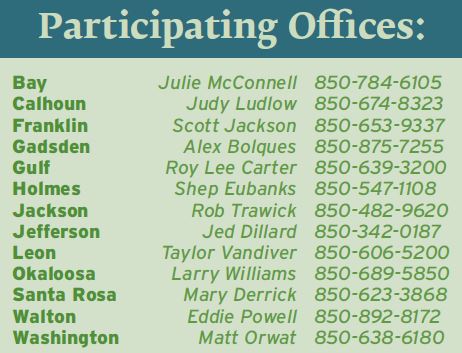
Time: 6:00PM-7:30PM (Central Time Zone)
Cost: $30 per person or $45/couple
Location: Local UF/IFAS Extension County Office



by Blake Thaxton | Dec 16, 2013
This fall, the Gulf Coast Small Farms and Alternative Enterprises Team put in a fall vegetable demonstration at UF/IFAS West Florida Research and Education Center in Jay, Florida. The demonstration had several fall crops such as spinach, swiss chard, lettuce, broccoli, cauliflower, carrots, turnips, rutabaga, kale, and collards. Several of the recommended varieties were grown so that small farmers and home gardeners could visually inspect the different varieties and see what they may want to grow next fall. The recommended varieties came from the 2012-2013 Vegetable Production Handbook of Florida and the 2013 Southeast US Vegetable Crop handbook.
So you can also experience this demonstration, below are pictures of some of the varieties being grown.
Swiss Chard
The swiss chard has done outstanding, although the low temperatures recently did produce cold damage. The swiss chard that was grown in the high tunnel structures has thrived.
 Lettuce
Lettuce
Ouredgeous (romaine), Cherokee (loose leaf), and Ithica (heading) were all grown. Below is a picture of Ithica which has done well, although slow growing up to this point. The cold caused some damage on Ithica as well.
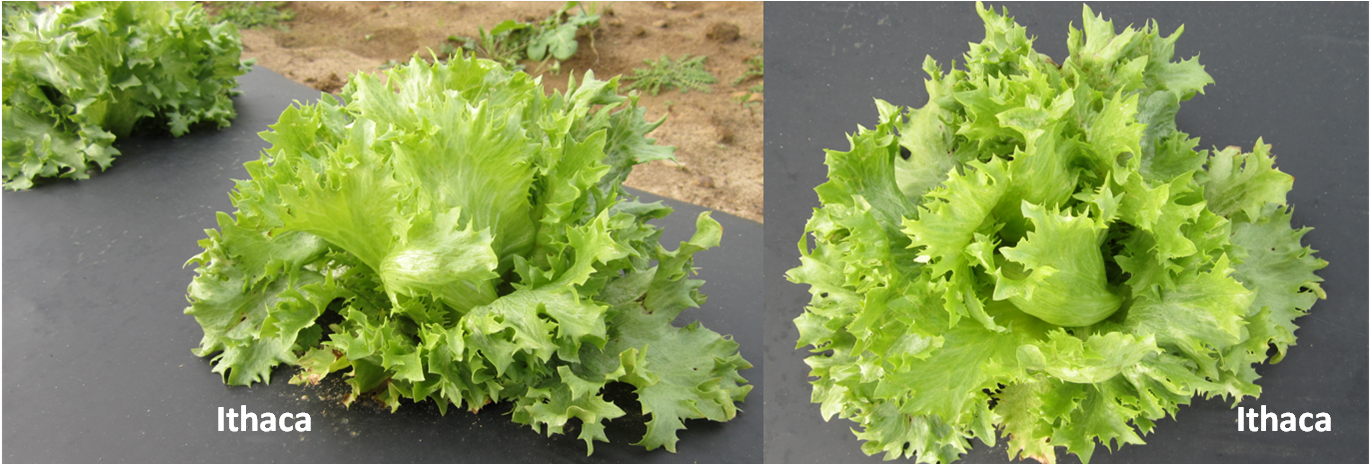 Carrots
Carrots
Suger Snax 54, Purple Haze, and Apache were the varieties grown. They have all done well but appear to have grown much slower than the literature indicates. Beautiful none the less!

Broccoli
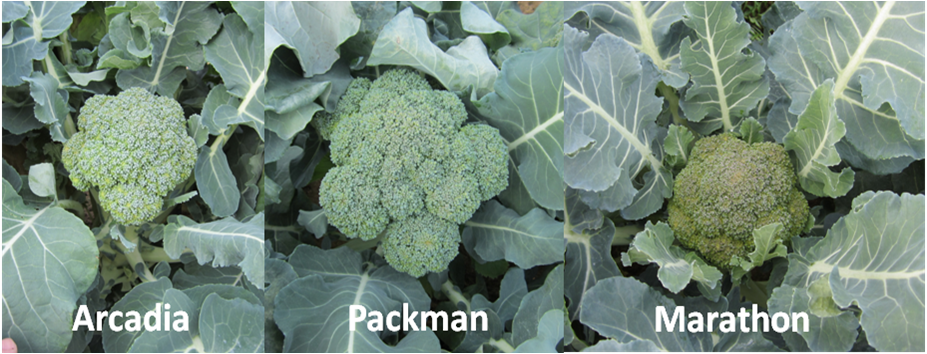
Cauliflower
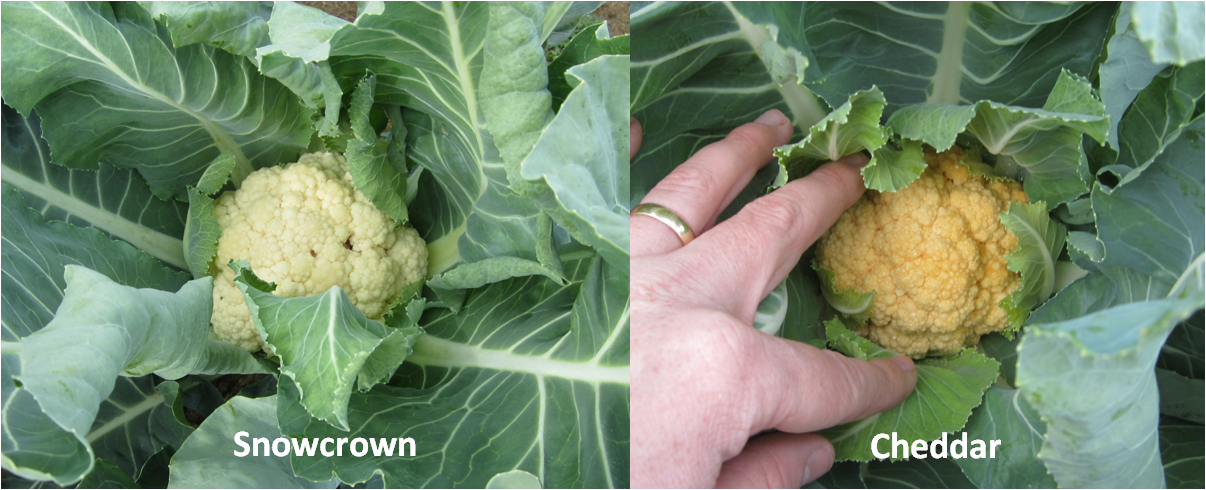 If you want to have a closer look at the varieties, call for a walk through (850)623-3868
If you want to have a closer look at the varieties, call for a walk through (850)623-3868 or email at bthaxton@ufl.edu. Their will be a field day held tomorrow Wednesday, December 18th, at this demonstration site for Master Gardeners and Small Farmers. Click here to register!
or email at bthaxton@ufl.edu. Their will be a field day held tomorrow Wednesday, December 18th, at this demonstration site for Master Gardeners and Small Farmers. Click here to register!
















